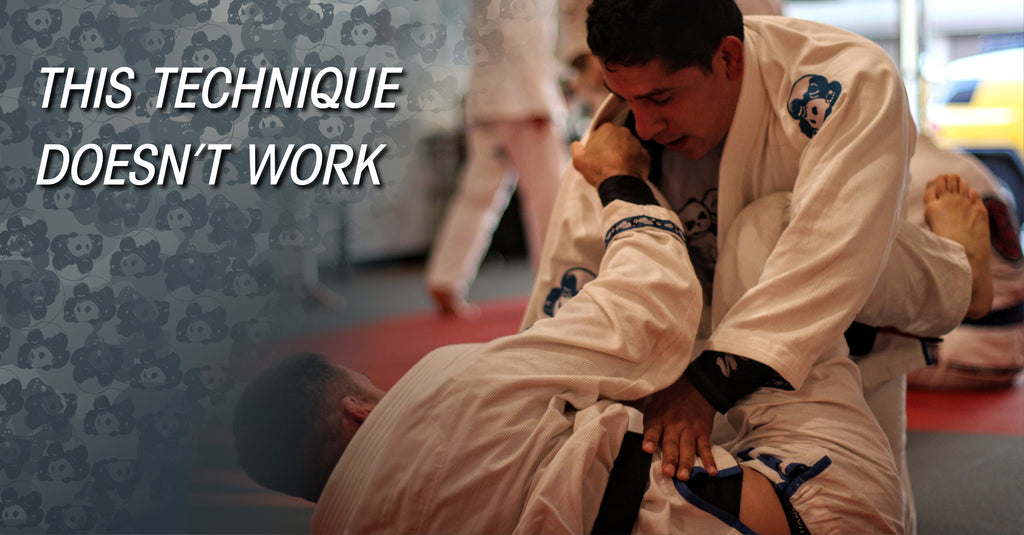This Technique Doesn’t Work

Usually—and I have been guilty of this myself—this thinking is rooted in frustration. After many attempts to learn and apply a technique and failing, you give up on a move. Unfortunately, many fundamental techniques get this treatment. I was inspired to write this article in the first place because the scissor sweep is one of these misunderstood techniques, yet we recently saw Ricardo Evangelista hit one on Leandro Lo. Other techniques that get this treatment include Americanas, sit-up sweeps, and even the mount position as a whole.
Side note: mount often frustrates students to the point that they don’t bother taking it in pure grappling matches, opting instead to work from side control and north-south.
Side side note: I too once lost faith in the Americana until Matt Kirtley spent an entire weekend hitting it on me every 15 seconds.
As I attempt to behave like a more mature instructor, I’ve revisited how I think about and how I teach techniques that commonly frustrate students. In addition to some modifications to class structure, we cover the following discussion points:
1. The right technique in the wrong situation will almost always fail. Even when you are able to execute a movement with technical proficiency, if you use it to solve the wrong problem, you may start to believe the technique itself is to blame. This is more common with new students, but it happens with experienced grapplers sometimes as well. If one of your attacks is not working, perhaps you should think more critically about when you are applying it. You might find that a key detail of your opponent’s positioning is off.
2. Timing is important too. Even if you use the right technique for the right scenario, subtle nuances in timing can mean the difference between success or failure. Especially in sweeps, a few seconds of hesitation can result in your missing the window you needed for success. If you incorporate some trigger drills into your training, you can refine your ability to recognize an opportunity more rapidly and thus execute closer to the ideal moment.
3. You might be bringing a knife to a gun fight. Even if you are using the right technique at the right time, you can feel as though the technique is failing if your offense is simply not as good as your opponent’s defense. This experience is most pronounced when there is a huge disparity in skill level (blue belt vs. black belt), but you can encounter this problem within your own belt level and not realize it. If you have only spent 20 hours on your de la Riva guard but your training partner has spent 60 hours passing de la Riva guard, you may lose a dozen micro battles that can be easy to miss. Keep practicing your technique, and gradually apply it against better and better defenders.
4. Consider the larger context. Sometimes, your ability to effectively apply a technique is tied to the bigger picture of how you grapple. Certain styles of grappling lend themselves more strongly to certain techniques, so you may find that some techniques just don’t fit into the game plan you are trying to play. If you try to shoehorn in a technique that takes you too far from you’re a game, it can feel as though that technique is not very effective because you don’t have the right techniques to set it up and to capitalize on where it takes you.
Jiu-jitsu technique can be strange sometimes. For as scientific as grappling as feel—playing strategy and tactics with very precise applications of leverage and movement—the artistic aspects of it can lead to strong opinions of what techniques you should and should not use. When you start to develop those sorts of opinions, challenge yourself to be more critical of those feelings so that you don’t miss out on a potentially powerful option for your game.
Other articles:
Quick links
Contact us
About us
Quality BJJ gear at fair prices, available all year. Founded in 2012 to provide an alternative to high-cost, limited edition gis. Dive into the BJJ lifestyle with us—join the Panda Nation!"
